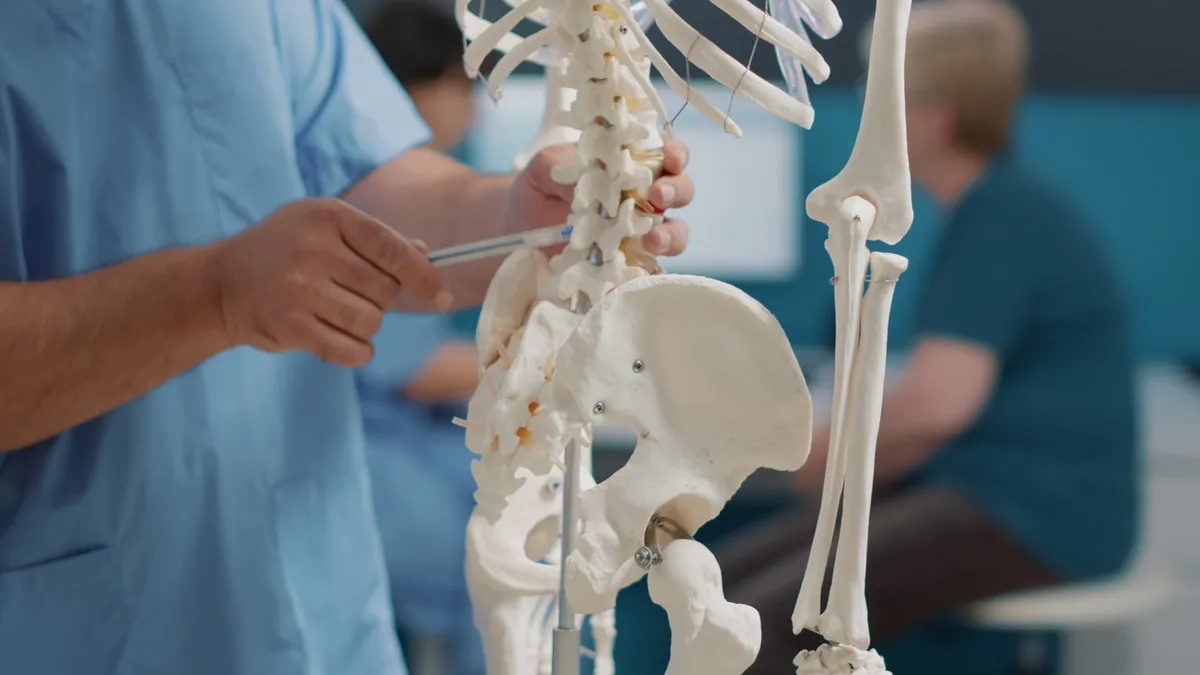Spinal Cord Injury Lawyers in Cumming, GA
If you or a loved one has suffered a spinal cord injury in a work-related accident, our attorneys can help you secure the benefits and compensation you deserve.

Spinal cord injuries are among the most serious and life-altering injuries a person can suffer. At Bourne Law Firm, our team is dedicated to representing clients with serious and catastrophic work injuries, including those who have sustained spinal cord injuries. We understand the challenges that come with such injuries and the significant impact they can have on your quality of life, career, and financial stability. Our experienced attorneys are committed to fighting for your rights and ensuring you receive the compensation you deserve. When you sustain a spinal cord injury in the workplace, it is essential to understand the benefits you are entitled to receive. These benefits can help you cover medical expenses, lost wages, and more. As part of a workers’ compensation claim, you may be eligible for the following benefits:
Medical treatment and rehabilitation expenses
The employee is entitled to receive medical treatment for the injury. This includes diagnostic evaluations, such as MRIs or other imaging, and consultations with specialists. If the spinal cord injury is severe, it may be classified as a “catastrophic injury” under workers’ compensation laws. This designation can significantly impact the benefits available to the employee. For instance, catastrophic injuries may entitle the employee to lifetime medical benefits and vocational rehabilitation. Depending on the severity of the injury, the employee may require home modifications or attendant care.Treatment may include:
- Surgery to stabilize the spine or address other related issues
- Physical therapy to improve mobility and strength
- Occupational therapy to help regain independence in daily activities
- Assistive devices, such as wheelchairs, braces, or adaptive equipment
Disputes may arise regarding the compensability of the injury, the necessity of medical treatments, or the classification of the injury as catastrophic. These disputes are typically resolved through hearings before an administrative law judge.
Lost income benefits while you are unable to work
You may be entitled to temporary total disability (TTD) benefits if you are unable to work due to the injury. TTD benefits are typically two-thirds of your average weekly wage, subject to state maximums and minimums. If you are able to return to work but at a reduced capacity, you may be eligible for temporary partial disability (TPD) benefits, which are calculated based on the difference between your pre-injury and post-injury earnings.
Permanent impairment benefits if applicable
If your doctor gives you an impairment rating, you may be entitled to weekly cash payments to compensate you for your disability. Impairment ratings are typically assigned by a medical professional based on the American Medical Association’s Guides to the Evaluation of Permanent Impairment, Fifth Edition, as required by O.C.G.A. § 34-9-263(d). PPD benefits are awarded for the permanent loss or loss of use, in whole or in part, of a specified body part or the body as a whole. These benefits are not contingent on the employee’s ability to work or earning capacity but are based solely on the permanent effect of the injury. To qualify for PPD benefits, the employee must no longer be receiving temporary total disability (TTD) or temporary partial disability (TPD) benefits.
Types of Spinal Cord Injuries
In most cases, spinal cord injuries automatically qualify as catastrophic injuries due to their severe and lasting impact on an individual’s life. Spinal cord injuries are complex and vary greatly in severity, with each case being unique. Understanding the type of spinal cord injury sustained is crucial in determining the appropriate course of treatment and assessing the potential for recovery. There are two primary classifications of spinal cord injuries: complete and incomplete.
Complete spinal cord injuries
To establish a complete spinal cord injury as a catastrophic injury under workers’ compensation, the injury must meet the statutory definition provided in O.C.G.A. § 34-9-200.1(g). Specifically, a spinal cord injury involving severe paralysis of an arm, a leg, or the trunk qualifies as a catastrophic injury
Complete spinal cord injuries involve a total loss of function below the level of injury. This means that an individual with a complete spinal cord injury will likely experience paralysis and loss of sensation in the affected areas of the body.
Incomplete spinal cord injuries
Incomplete spinal cord injuries are characterized by a partial loss of function below the level of injury. With an incomplete injury, an individual may retain some level of sensation, movement, or both in the affected areas.
Every case is unique and incomplete spinal cord injuries may also qualify as catastrophic injuries under workers’ compensation laws if they result in severe paralysis or other significant functional impairments. The determination of whether an incomplete spinal cord injury is catastrophic depends on the specific circumstances of the case. The claimant bears the burden of proving by a preponderance of competent and credible evidence that the injury is catastrophic. This may include showing that the injury prevents the claimant from performing their prior work and any other work available in substantial numbers within the national economy.
Anatomy of The Spine
In addition to the extent of damage, spinal cord injuries can also be categorized based on the level of injury within the spinal column. The spinal column is divided into four primary regions, each of which can be affected by an injury:
- Cervical: Injuries occurring in the neck and upper back region can result in quadriplegia, affecting both the upper and lower extremities.
- Thoracic: Injuries in the middle portion of the back can lead to paraplegia, impacting the lower extremities and potentially causing loss of function in the trunk of the body.
- Lumbar: Injuries to the lower back area can also result in paraplegia, affecting the hips and legs.
- Sacral: Injuries in the base of the spine typically impact the hips, buttocks, and pelvic region, and can cause varying degrees of impairment in the lower extremities.
Causes of Spinal Cord Injuries in the Workplace
Spinal cord injuries can occur in various ways in the workplace, and their causes can range from seemingly minor incidents to catastrophic accidents. Understanding the common causes of these injuries can help workers take preventative measures to minimize the risk of injury and ensure a safer work environment.
Some of the most common causes of spinal cord injuries in the workplace include:
- Falls from heights or on slippery surfaces: Workers in construction, warehouse, or other industries that require working at heights are at an increased risk of suffering spinal cord injuries from falls. Additionally, slippery surfaces caused by spills or inadequate maintenance can also lead to falls and serious injuries.
- Vehicle accidents : Accidents involving forklifts, trucks, and other heavy machinery can result in spinal cord injuries. These accidents can occur when vehicles collide or when workers are struck by moving vehicles in the workplace.
- Heavy equipment accidents : Workers operating or working near heavy machinery, such as cranes, loaders, or conveyors, can suffer spinal cord injuries if they are struck by or caught in the equipment. Proper training and adherence to safety protocols are essential in preventing these types of accidents.
- Work-related violence or assault: Although less common, incidents involving violence or assault in the workplace can lead to spinal cord injuries. Employers have a responsibility to maintain a safe work environment and address any potential threats to worker safety.
In the aftermath of a workplace spinal cord injury, it is essential to seek experienced legal representation to ensure that your rights are protected. The team at Bourne Law Firm focuses on serious and catastrophic work injuries, providing the expertise and support needed to navigate the complex workers’ compensation process.
Settlements and Award Calculations
Settlements and award calculations for spinal cord injuries take into account factors such as the severity of the injury, the injured worker’s ability to return to work, and their pre-injury earnings. The goal is to compensate the injured worker for their medical expenses, lost wages, and other damages resulting from the injury.
How Our Law Firm Can Help
At Bourne Law Firm, our team focuses on helping individuals with serious and catastrophic work injuries, including spinal cord injuries. We understand the complexities of workers’ compensation claims and can guide you through the process. Our experienced attorneys will advocate for your rights, ensuring you receive the benefits you are entitled to. Contact us today for a free consultation.
